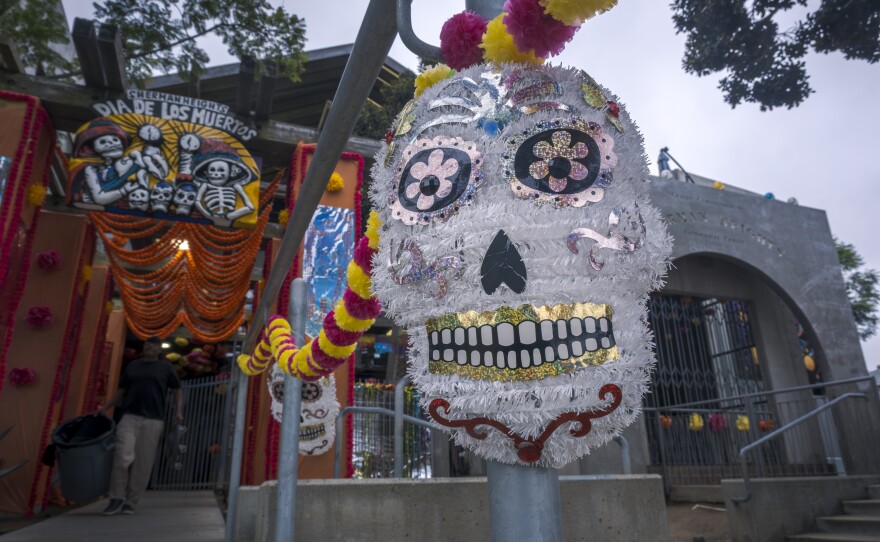Every year for the past 30 years, the Sherman Heights Community Center transforms to honor loved ones who have passed on for Day of the Dead, or Día de Muertos in Spanish.
Calavera (skull) and papel picado (perforated paper) decorations line the path inside to the center’s hall, which is full of brightly decorated altars.
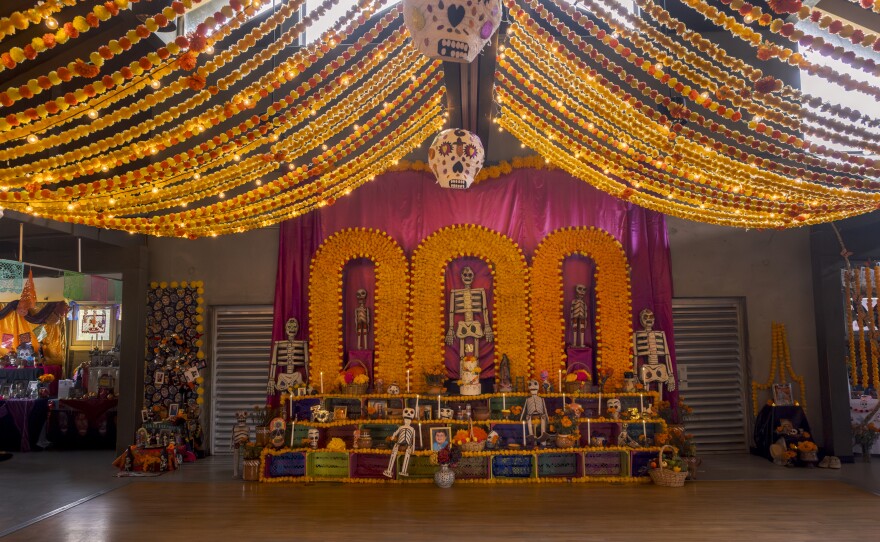
Francisco Soto, programs manager at the community center, said their Día de los Muertos Celebration is one of the most important events for him. “It’s about family, it’s about tradition, it’s about culture, it’s about history.”
The indigenous tradition was incorporated into Latin American Catholic customs during the colonization of the Americas.
“The indigenous people of Mexico, like the Aztecs and the Maya, believed that when they passed away they would go to Mictlán — the underground. They believed that once someone passed away, they would go to Mictlán and they would return every year to see their families,” Soto explained. “When the Spanish came to the Americas they fused the culture of the indigenous people with the Catholic Church.”
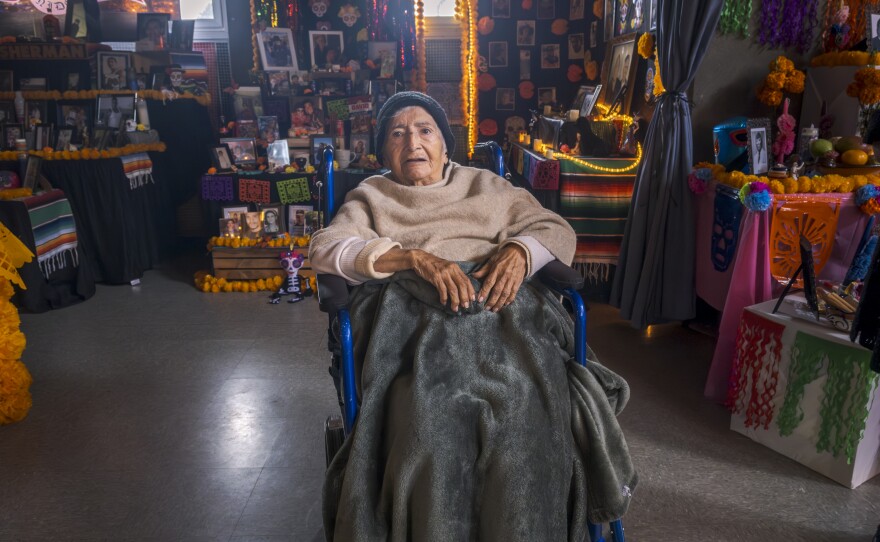
Ninety-four-year-old Anita Lopez helped found the community center. Her daughter still brings her to see the flowers and altars. She’s been part of this community since 1972.
She has seen many ofrendas (altars), dedicated to many people. However, the ofrendas don’t have to be about one specific person — they can be dedicated to a group of people.
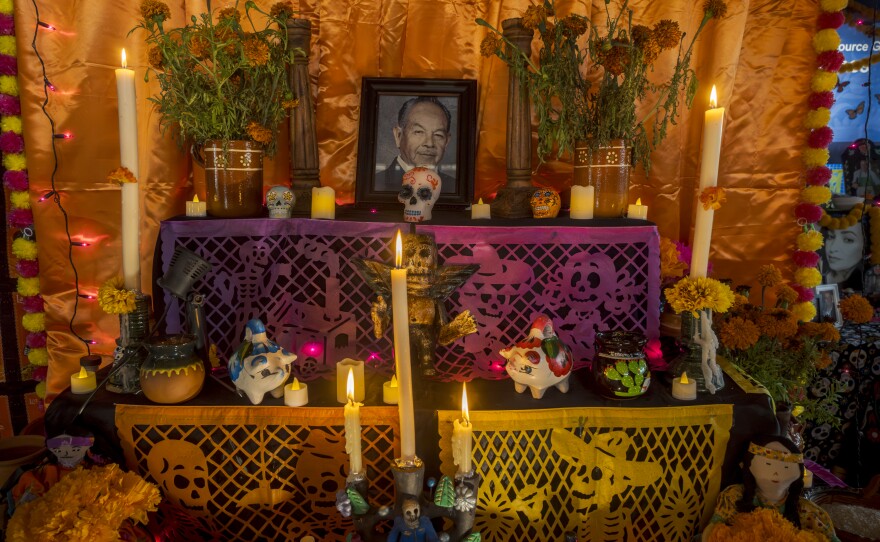
Marta Diaz dedicated her altar to the survivors of domestic violence, as she is a survivor herself. On her altar, Diaz has framed four pages that tell her story of survival, titled “La Historia de Mi Vida, Violencia Doméstica (The Story of My Life of Domestic Violence)."
In Spanish, Diaz described a turbulent home: “Por que me empezó a llenar de amigos nuestra casa — alcohol, cigarros y drogas. Siempre terminaba el fin de semana en la cárcel por violencia doméstica, eventos grandes, llenos de gritos, golpes, sangre.”
("He started filling the house with people, with alcohol, cigarettes and drugs. He would always end up in jail on the weekends for domestic violence, big events, full of screams, blows and blood.")
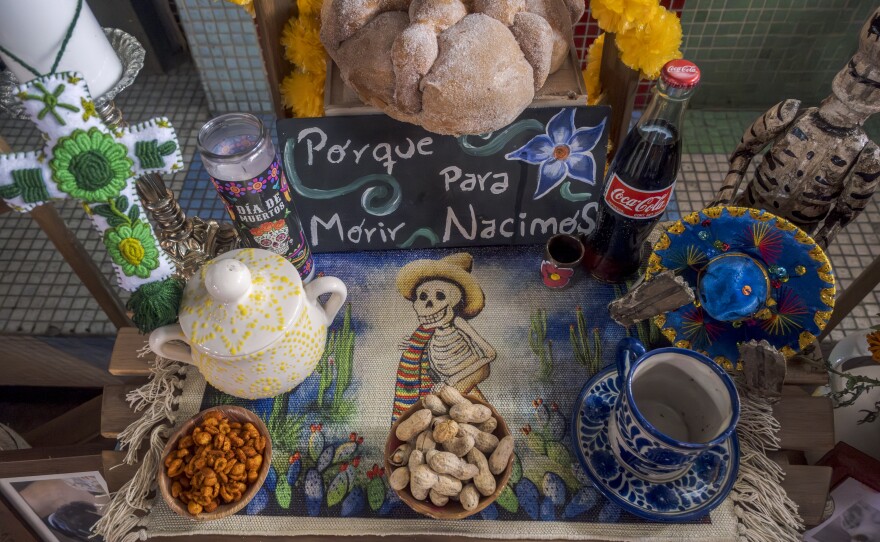
Each ofrenda is unique, but they all include candles representing fire, papel picado representing wind, glasses of water, and Mexican marigold flowers, known by their indigenous name cempasúchitl, representing earth.
The tradition lasts seven days, with each day dedicated to different groups.
“One day is for people who pass away, like for an accident, for victims of an accident. There's another day for people who passed away because they were killed, and other days for people who passed away because of an illness. Then there's another day, we call it Día de Los Ángeles, which is Nov. 1, and it’s dedicated to the little babies that passed away or any teenager or anyone under 18,” Soto said.
Nov. 2, the final day, is the biggest.
“(That day) is for everyone — Día de los Fieles Difuntos, which is Día de los Muertos,” Soto said. “It’s more about love, it’s more about honoring the memory of a person.”
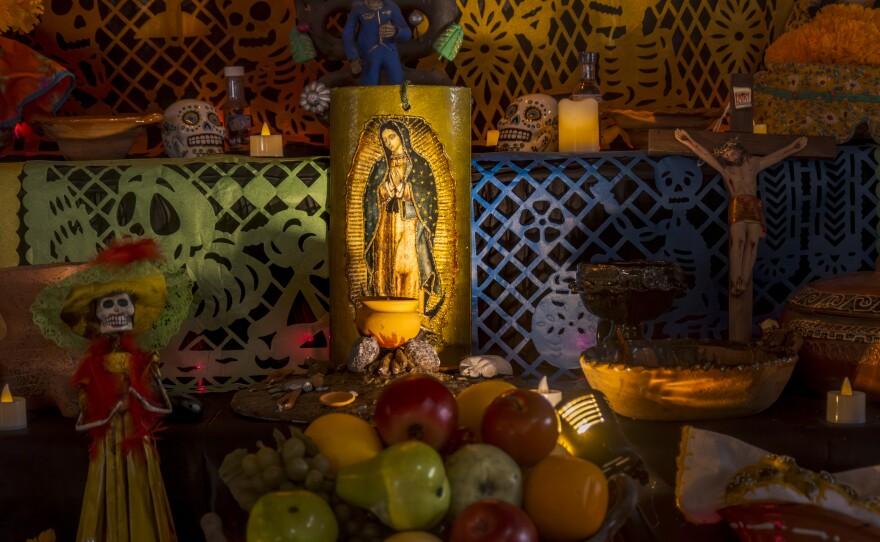
For Soto, the tradition is about preserving his cultural heritage.
“We keep our traditions, we keep our culture, we try to keep it alive.”
The Sherman Heights Community Center is hosting Day of the Dead events throughout the month. More information is available on their website.

